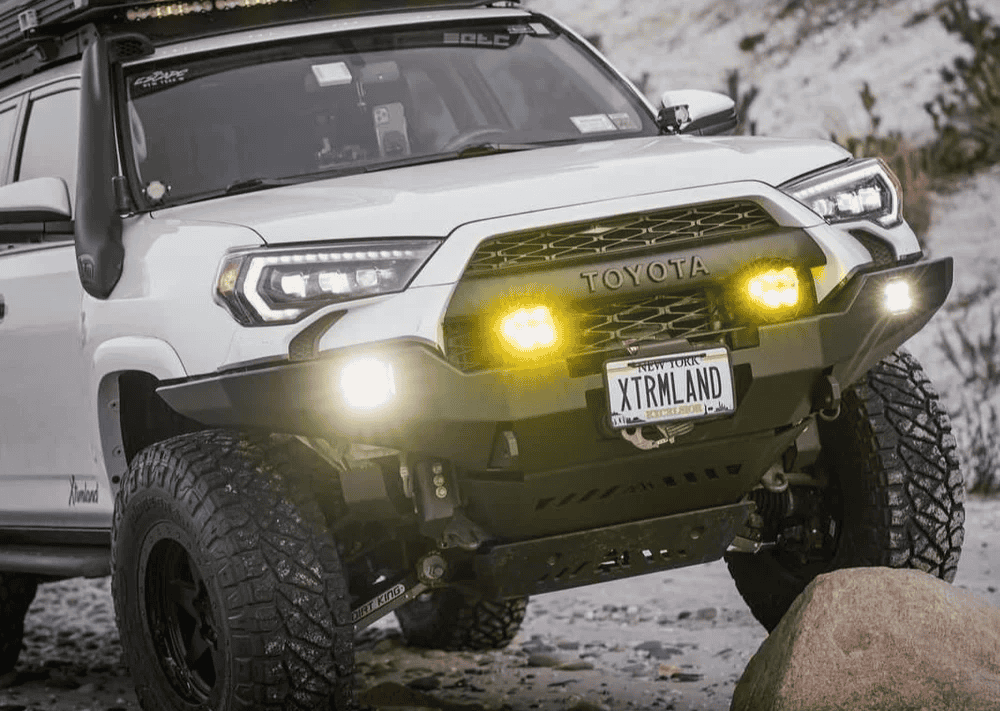Overland Vehicles

Heat control: Even on mild days, solar gain through glass and dark shell materials spikes interior temperatures. Active airflow pulls cooler outside air in and exhausts hot air out, stabilizing the space for passengers, pets, and sensitive equipment.
Moisture management: Sleeping in the bed, stowing damp waders, or hauling snow covered bikes introduces moisture. Without air exchange, condensation forms on metal and glass, leading to mildew smells and corrosion. Continuous low speed ventilation trims humidity and keeps bedding and liners dry.
Air quality: Fuel fumes, camp smoke, and off gassing from plastics collect in sealed spaces. A fan that can both exhaust and intake allows you to purge stale air quickly or create positive pressure to reduce dust intrusion on dirt roads.
Security and privacy: With a powered fan and screened intakes, you can keep windows shut while maintaining airflow. That means less noise, fewer insects, and better security in crowded lots or windy camps.
Airflow math: Start by estimating shell volume. A midsize bed with a standard cap often ranges from 60 to 100 cubic feet. For comfort, target 10 to 20 air changes per hour. That translates to 10 to 35 CFM for small caps, and 30 to 70 CFM for larger shells. Many compact 12 volt roof fans exceed 100 CFM, which gives headroom to run at lower speeds for quiet operation.
Fan types:
Noise and controls: Brushless motors with PWM speed control run quieter and last longer. A silent low setting for night use is as important as a strong boost for midday heat. If you sleep in the shell, prioritize fans under 35 dB at low speed with smooth airflow rather than choppy blade noise.
Dust and water defense: Desert roads push fine dust into every seam. A fan with a tight closeable lid and good gaskets helps seal the roof while driving. For intake runs, add a washable prefilter or snorkel style hood that faces rearward to limit dust and rain ingestion.
Durability: Corrosion resistant hardware, UV stable plastics, and aluminum housings hold up to sun, salt, and constant vibration. A replaceable gasket and accessible screen make cleaning simple after muddy weekends or coastal trips.
Wiring and power: Most 12 volt fans draw 1 to 3 amps on low and 3 to 6 amps on high. Wire gauge should match run length and current, with a fuse sized for the circuit close to the power source. Many owners add a dedicated fused line from a house battery or a smart split charge relay, keeping the starting battery safe during overnight use.
Placement strategy: Mount high to capture hot air, and combine with a passive or powered low intake for crossflow. If you carry pets, place the fan where airflow reaches their resting area. Avoid interference with roof racks, solar panels, and shell ribs.
Sealing the aperture: A clean, flat opening with a compressible gasket and butyl tape beneath the flange gives a watertight seal. Finish edges with UV safe sealant and use stainless fasteners with backing plates on thin fiberglass to spread load. Recheck torque after the first heat cycle.
Cold weather and condensation: In winter, warm breath meets cold shell panels at the dew point. Insulation reduces temperature swings, but only ventilation removes moisture. Run the fan at low speed with a cracked intake to keep windows clear and bedding dry.
Safety and controls: A protected fuse, an accessible switch, and a rain hood or closing lid are essential. If you often leave the shell unattended with the fan on, consider a thermostat or timer to balance airflow and battery life.
A ventilation fan delivers the most benefit when it is integrated with the rest of your system. Power distribution, roof layout, and dust management all interact. If your truck shell is part of a larger travel build, consider a coordinated approach that includes airflow, lighting, charging, and storage so every component plays nicely on and off road.
Our team builds complete travel systems where ventilation is planned alongside wiring protection, corrosion resistant mounting, and waterproof sealing. If you are evolving your pickup into a capable backcountry platform, see how our overland rigs approach ties airflow into suspension, rack, and power choices. For drivers who want a tailored installation with tested parts and clean fitment, explore a custom overland upfit. Curious about our process and standards? Start with Why choose OZK Customs to understand how we design around real world use.
A well chosen ventilation fan for a truck shell changes the way you travel. Cooler interiors, dry bedding, less dust, and a quieter night’s sleep add up to better miles and easier camp routines. Tell us how you haul, where you camp, and what you carry. We will spec the airflow, seals, wiring, and controls that fit your routes, then install and test it so you can roll out confident.
What we build:
If seamless execution and long term reliability matter to you, we are ready to help you breathe easier on every trip.
Ready to add clean, quiet airflow to your truck shell or overland rig? Our team integrates premium ventilation with weather sealing, wiring, and power management so you get comfort without compromise. Tell us how you travel and we will spec, install, and test a system that fits your build and your routes.
ADDRESS:
6159 E Huntsville Rd, Fayetteville, AR 72701
PHONE:
(479) 326-9200
EMAIL:
info@ozkvans.com